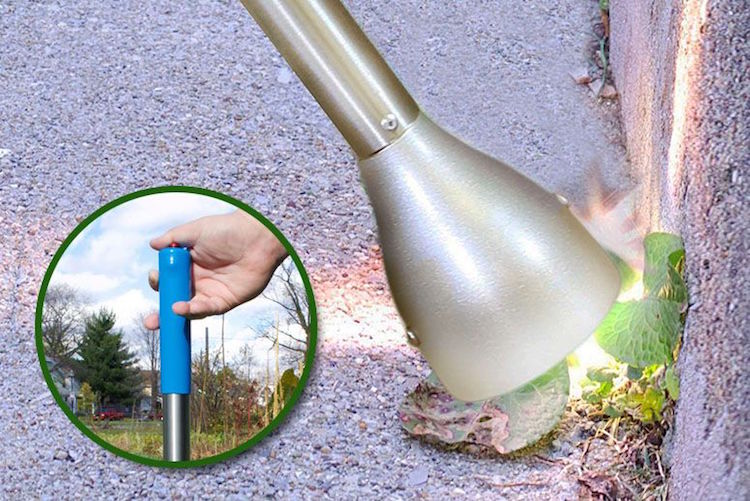Environment
The NatureZap wand fries weeds, and the Air Force loves it

Image: Global Neighbor
Weeds are one of the greatest domestic enemies we face as a nation. They invade our parks, our gardens, our driveways and in our farms. They have subtly taken over the plant world, and the fight against them has been brutal and devastating to the harmless herbage in their neighborhood. Until now harsh, toxic chemicals seemed the only way to snuff these foes out, but the military has commissioned a new tool for their arsenal to combat weeds for the last time: the NatureZap, a tool which uses blue light and heat.
We’re not accustomed to associating environmental and conservation issues with the military, the two seeming to have opposing meanings with one prepared for warfare and industry and the other preparing for the destruction it causes to our planet. But our Air Force has a very good reason to care about Mother Earth. The military owns approximately 25 million acres of land that preserve “ecologically important” habitats, and under the Sikes Act, the military is tasked with reducing the amount of chemicals they use. Which is why fighting weeds, a pernicious and harmful threat to the environment, with the power of light and heat is an idea they can get behind. Edwards Air Force Base in Southern California is currently working with Global Neighbor to test the NatureZap for effectiveness, and conservationists think that more research should be conducted.
Ohio company Global Neighbor is dedicated improving the way we care for our lawns by cutting removing the carbon footprint we leave when we use standard lawn-care equipment. Their flagship product is the NatureCut, their own lawn mower, but in 2007 they introduced the first version of the NatureZap that could only use heat to kill weeds. When speaking to a journalist from TakePart, company president Jon Jackson said that they’ve “grown up” since then. And grow up, they have. Since discovering that exposure to too much light (which fascinates lower growth rate) combined with drying out from heat is a pretty effective method, the little company that could has seen interest in the NatureZap grow. About $900,000 worth of interest and faith. Global Neighbor has received funds, one in 2012 and the other in 2014, from the Department of Defense and the Air Force through our federal government’s Small Business Innovation Research program.
Some research has already been conducted by Central State University professor Cadence Lowell to test versions of the NatureZap. According to Lowell, it disrupts chloroplasts (for the scientifically disenchanted, those are the green plant cells where photosynthesis occurs). Other possible damages are continuously being investigated, but his findings presented at the Weed Science Society of America’s annual meeting this year has at least proved that the NatureZap has been an effective tool against ragweed. If it continues to be found effective, the wand-like machine could change the landscape of lawn care forever, reducing the harmful impact of toxic chemicals by allowing us to turn nature against itself.





0 comments